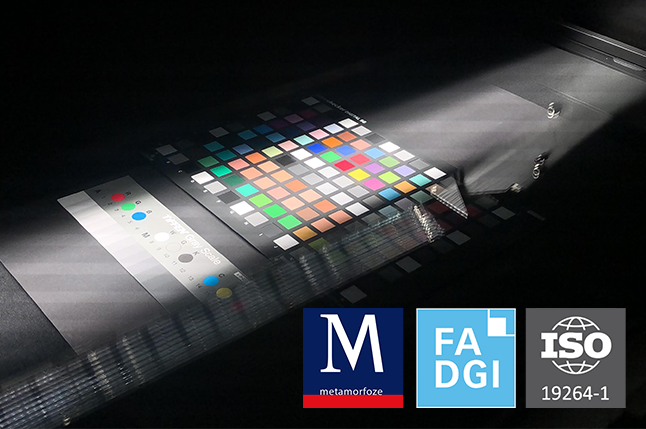Why implementing Metamorfoze, FADGI, and ISO 19264-1 standards matters in digital preservation

In the realm of digital preservation, ensuring the longevity, authenticity, and usability of digitized cultural heritage is paramount. Implementing internationally recognized standards, such as Metamorfoze, FADGI, and ISO 19264-1 is essential for achieving these goals. Below, we explore what these standards are and why they are critical for any institution committed to safeguarding digital assets.
Understanding the standards
Metamorfoze
- Origin: Developed by the Netherlands’ national program for the preservation of paper heritage.
- Scope: Focuses on the digitization of two-dimensional materials—books, manuscripts, newspapers, photographs, and more.
- Key Principle: Digital images must be of such high quality that they can serve as true replacements for the originals, which are often withdrawn from use after digitization.
- Quality Tiers: Defines three levels: Extra Light, Light, and Strict, tailored to the preservation needs and intended uses of the digitized material.
FADGI (Federal Agencies Digital Guidelines Initiative)
- Origin: A U.S. initiative started in 2007 to harmonize digitization practices across federal agencies and cultural institutions.
- Scope: Provides comprehensive guidelines for digitizing still images, audio-visual content, and textual records.
- Key Principle: Emphasizes measurable image quality, color accuracy, resolution, file formats, and metadata to ensure digital replicas are faithful to the originals.
- Star System: Rates image quality from one to four stars, with four stars representing the highest level of fidelity and suitability for long-term preservation.
ISO 19264-1
- Origin: Developed by the International Organization for Standardization to unify and standardize image quality assessment for cultural heritage imaging.
- Scope: Sets out requirements and best practices for the creation, storage, and retrieval of digital images, ensuring their authenticity, integrity, and accessibility.
- Key Principle: Provides a globally recognized framework for consistent, high-quality digital imaging, facilitating interoperability and long-term preservation.
Why implement these standards?
1. Ensuring consistency and quality
- Standards provide objective, measurable criteria for image quality, color fidelity, and resolution, ensuring that digitized materials are accurate and reliable representations of the originals.
- Consistent application of these standards enables institutions to produce digital assets that meet international benchmarks, enhancing credibility and trust.
2. Facilitating long-term access and preservation
- High-quality digital replicas reduce the need to handle fragile originals, thereby protecting them from further damage.
- Standards like ISO 19264-1 and FADGI ensure that digital files remain accessible, authentic, and usable over time, even as technology evolves.
3. Supporting interoperability and collaboration
- Adhering to recognized standards makes it easier to share, exchange, and aggregate digital collections across institutions and borders, fostering collaboration and resource sharing.
- Standardized metadata and file formats enable seamless integration into digital repositories and discovery platforms.
4. Streamlining workflows and compliance
- Standards guide digitization workflows, from capture to quality control, reducing errors and inefficiencies.
- They also help organizations meet regulatory and funding requirements, as many grants and institutional policies mandate compliance with established digitization standards.
5. Enhancing usability and future-proofing
- By following these standards, institutions ensure that digital assets are not only preserved but also searchable, accessible, and usable for diverse audiences now and in the future.
- This future-proofs collections against obsolescence, ensuring ongoing relevance and value.
Comparison table: Metamorfoze, FADGI, and ISO 19264-1
| Standard | Origin | Quality Tiers | Focus Areas | Key Benefit |
|---|---|---|---|---|
| Metamorfoze | Netherlands | Extra Light, Light, Strict | Image quality, replacement | Faithful replacement of originals |
| FADGI | USA | 1–4 Stars | Resolution, color, metadata | Measurable, scalable image quality |
| ISO 19264-1 | International | Level C, B, A | Global harmonization | Standardized, interoperable digital imaging |
Conclusion
Implementing Metamorfoze, FADGI, and ISO 19264-1 standards is not just a technical choice. it is a commitment to the authenticity, longevity, and accessibility of our shared digital heritage. By adopting these frameworks, institutions can ensure their digitization efforts are robust, credible, and future-ready, ultimately serving both present and future generations




